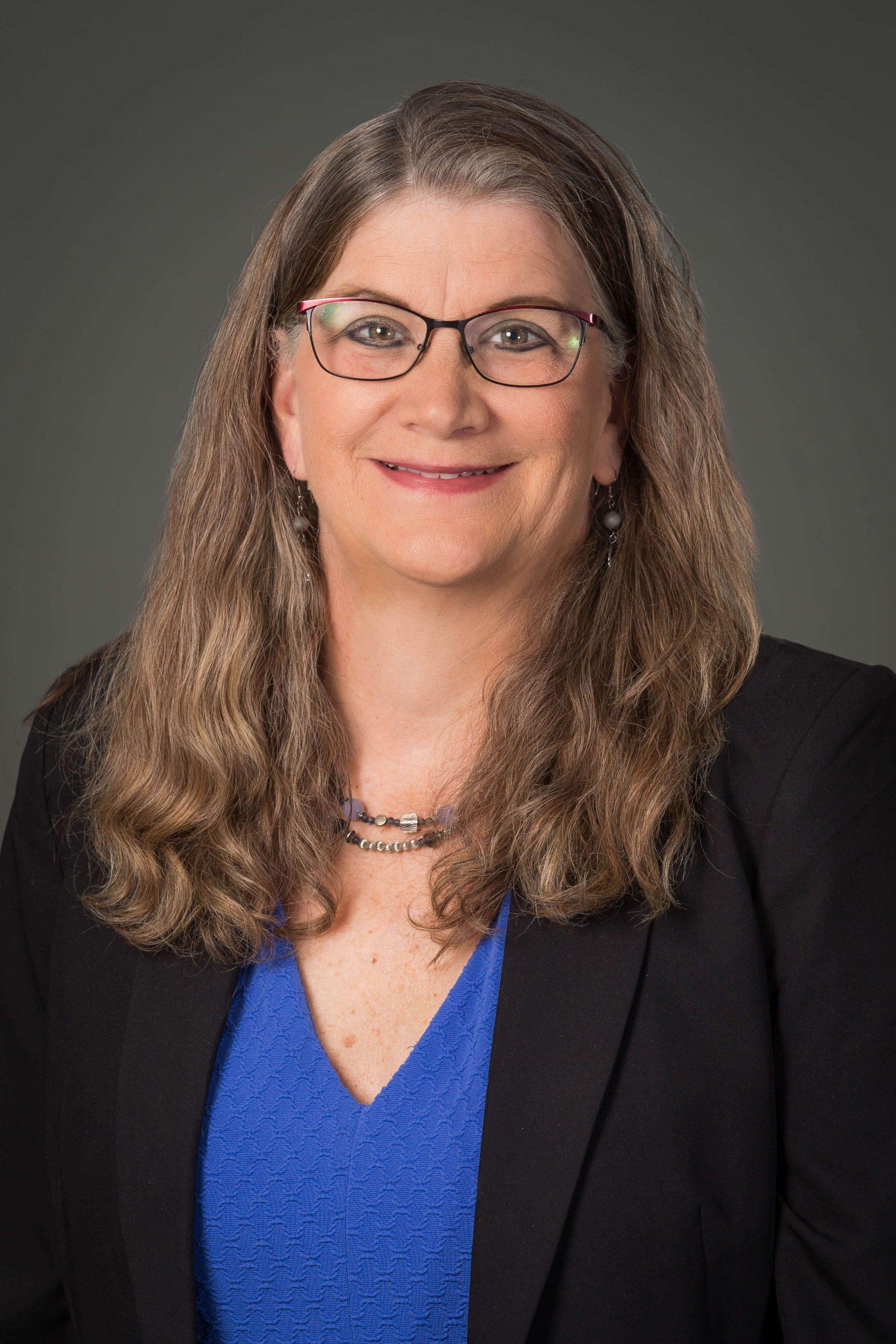FOCUS
Principal turnover is too high. Principal supervisors can help
By Amie Cieminski and Anthony Asmus
Categories: Coaching, Collaboration, Leadership, Standards for Professional LearningFebruary 2023
While there has been national attention to the crisis of retaining teachers, principal turnover is also high. The average turnover rate for principals is 18% — a number that, while troubling on its own, obscures the more concerning facts that 35% of principals have been at their schools for less than two years and principal turnover is higher in schools with high poverty rates (Levin & Bradley, 2019). Principal turnover can disrupt school improvement efforts, staff climate, morale, teacher retention, and student achievement.
In a review of research, Levin and Bradley (2019) summarized five mechanisms for improving principal retention that focus on professional culture, support, and learning. These strategies provide an important starting place for changing the turnover trend, but implementing them requires a clear understanding of who needs to be involved and how. According to our experience and research studies, principal supervisors are essential for implementing these strategies, increasing the retention of principals, and improving teaching and learning.
Principal supervisors are often overlooked in conversations about improving schools, but their importance has gained attention from the principal pipeline work of The Wallace Foundation and the advent of Model Principal Supervisor Professional Standards produced by the Council of Chief State School Officers (2015). This work has shifted the job description for principal supervisors from compliance officers and evaluators to instructional leaders who lead with principals and facilitate learning and support for the sake of improvement in teaching and learning.
Principal supervisors hold various titles and work portfolios, depending on the structure and size of a school district, including director of school leadership, assistant superintendent of schools, human resources director, and even superintendent. What defines their role as a principal supervisor is that they are focused on working collaboratively with principals to grow in their roles as excellent instructional leaders.
We (co-authors of this article) have both supervised principals in the Greeley-Evans School District 6 in Colorado. We spoke to five colleagues across Colorado to glean key actions that principal supervisors say contribute to improving principals’ job satisfaction and, in turn, the retention of the principals. From these conversations and experiences, we unpack what the recommendations from Levin and Bradley (2019) mean for principal supervisors and provide specific examples that other district leaders might adopt to stop the principal churn.
Mechanisms to support and retain principals
According to Levin and Bradley’s (2019) research review, the key mechanisms for improving principal retention are:
- Improve principals’ working conditions;
- Increase their decision-making autonomy;
- Ensure sufficient compensation;
- Decrease counterproductive accountability practices; and
- Provide meaningful and high-quality professional learning.
Ongoing learning and support that is consistent with Learning Forward’s Standards for Professional Learning (Learning Forward, 2022) is embedded in each of these.
All of these mechanisms were reflected in our conversations with school leaders. In some cases, we have expanded on these mechanisms to add related conditions and practices that leaders shared with us as key to strengthening the profession.
Improve principals’ working conditions
One of the most important aspects of improving working conditions is ensuring employees know that someone cares about them at work and encourages their growth and development. In contrast to managing as a “higher-up” in a downtown office focused on compliance, principal supervisors should start by establishing positive working relationships. These relationships include getting to know the principal, staff, and communities through frequent site visits. Going to the school rather than expecting principals to come to the supervisor’s office is a small step to minimize the hierarchical nature of supervision and strengthen the principal-supervisor relationship.
Effective supervisors begin each school visit with a personal check-in and time of authentic recognition. These recognitions might include outstanding work with the parent community, increased student growth scores on a local assessment or student attendance, or improved school culture. Sherry Kalbach, area superintendent in District 11 in Colorado Springs, focuses on celebrating easy and small wins with her principals, who may be focused on big improvements like state assessment scores and do not recognize all the good work they are accomplishing.
Kirk Vsetecka, an assistant superintendent in Widefield, believes that a positive working relationship starts with clear expectations and communication and then letting the principals be themselves. Dina Perfetti-Deany has supervised principals in St. Vrain Valley School District for six years. She establishes relationships by explaining her expectations and approach, including setting goals in collaboration with each principal that focus on instructional leadership and professional growth. She intentionally spends time listening more to her principals than talking at them.
School district leaders create collaborative structures to foster relationships among the principals they supervise. These structures might be learning communities based on level (e.g., elementary and secondary), learning topic, or feeder area. Having a supportive network of principal colleagues and mentors helps with the isolation that some principals experience and provides an additional source of learning and knowledge.
Kalbach believes principal retention is a combination of relationship and support. She starts by understanding what drives the principal, personally and professionally, and builds from there. “Principals need to know the supervisor has their back and can get them the resources they need to be successful in a timely manner,” she said.
Availability and accessibility to resources can stop principal frustration and increase job satisfaction. Principal supervisors should make themselves and other district office leaders available for support, guidance, and training. Like other supervisors we spoke with, Paul Jebe, from District 51 in Grand Junction, takes a 24/7 stance for communication with his principals so they can receive the support they need immediately. He says he ensures that school leaders get the timely support they need and elicits feedback from them when the district is not getting it right.
Increase decision-making autonomy
Principal supervisors have often served as principals themselves. They understand the job’s complexity but may not have experienced the particular issue their principals are facing. Principal supervisors can support decision-making authority and allow principals to be authentic while shaping solutions that address the specific needs of their staff and students.
Perfetti-Deany was a principal for 11 years before joining the district administration team. She noted that the principalship continues to change, and she has not experienced all the challenges that principals face today with the evolution of technology and the COVID-19 pandemic. She focuses on building the principals’ toolboxes of strategies. Likewise, Vsetecka said that many of his visits and phone calls with principals are strategy sessions. Jebe aligns his support with principal actions and decision-making. Jebe dedicates two or three days per week to coaching his principals using the leadership framework created by district directors to ensure principals have what they need to succeed. Rather than providing solutions, supervisors need to help principals think about possible consequences and strategies to roll out decisions that work for their school community, which builds mastery of sound decision-making.
Both Vsetecka and Jennifer Perry, deputy superintendent in Cherry Creek Schools, emphasize that they want principals to be their own type of leaders and not feel that they need to follow in their supervisor’s footsteps. This approach goes a long way in promoting autonomy for principals.
Autonomy does not mean leaving principals to believe that they are on their own island or that asking for help is a sign of weakness. Vsetecka said he worried that what leaders in other school districts frame as independence may translate into lack of support and being afraid to call for help. Instead, effective principal supervisors encourage their principals to ask for support rather than go it alone and get themselves stuck.
Perry stressed that, in Cherry Creek Schools, supporting (not directing) principals is the job of the entire district office staff. For example, she sends finance specialists to the schools to help with budgets or special education experts for topics about students with disabilities. Getting principals the information they need from various district office leaders can support principals’ decision-making capabilities. This approach frees principal supervisors to focus on decisions about teaching and learning rather than spend their time on operational and managerial issues (Honig & Rainey, 2020).
Ensure sufficient compensation and manageable workloads
Levin and Bradley’s category about sufficient compensation is important, of course, but competitive salaries and benefits alone do not translate to retention among school leaders. Kalbach said, “Money is nice, but it’s not what keeps principals in their seats,” citing the full support from various departments and relationships with colleagues and supervisors as more important factors. While principal supervisors may not be able to directly influence monetary compensation for the principals they supervise, they can ensure that principals feel valued for their work.
District leaders need to monitor the workload of building leaders. They can reduce the number of requirements, calendared workdays, or new initiatives. Principal supervisors recognize what is on their principals’ plates. Principal supervisors serve as bridges when they help other district leaders understand the demands on building leaders. They serve as buffers when they adjust timelines and allow flexibility for schools to implement new requirements or initiatives.
They also serve as buffers when they protect principals’ professional learning time by keeping principal meetings focused on leadership, instruction, and assessment and requesting that other leaders send information in writing to principals through a weekly streamlined email communication.
Decrease counterproductive accountability practices
Being a principal can be daunting, and high-stakes accountability measures can be counterproductive to retaining principals. Principal supervisors should provide real-time support and invest in their principals’ success rather than punish them. The principal supervisors interviewed said that support starts with district guidelines and systems around policy, instructional frameworks, or communication. For example, Widefield has a teaching and learning cycle that provides a common vision, vocabulary, and expectations for quality instruction that principals have found helpful.
Principal supervisors should spend most of their time collaborating, mentoring, or coaching rather than calibrating or evaluating (Lipton & Wellman, 2013). While effective supervisors value the evaluation process, they focus on goal setting, formative feedback, modeling, and coaching. Coaching involves asking reflective questions to help principals grow in capacity. Classroom walk-throughs are an important tool that principal supervisors use for coaching principals. Supervisors use modeling as another coaching tool rather than telling principals how to do their jobs.
Rather than increase sanctions and harsh requirements for low-performing schools, supervisors can increase their support in these situations. Perfetti-Deany says she doubles down on the support to bolster the necessary skills for the challenges. This keeps principals on the team rather than leading to principal attrition. Likewise, Anthony Asmus from Greeley-Evans School District 6 increases the number of school support visits to principals in lower-performing schools. He sits side-by-side with the principals as they coach teachers on instructional improvement. He co-facilitates professional learning and helps principals create agendas for their building leadership teams.
Provide timely and relevant professional learning
Principal supervisors’ critical tasks for nurturing the professional growth of principals include matching resources for principals’ specific needs and facilitating professional learning for their principals. Principal supervisors use student outcome data and staff implementation data to shape learning opportunities for their leaders. They also connect principals with high-leverage external learning opportunities and then provide ongoing support for the implementation of new learning.
Principal supervisors often work with other district leaders to provide professional learning aligned with Learning Forward’s Standards for Professional Learning on essential topics that all principals need, such as leading for more equitable student outcomes, interpreting the assessment results for diverse learners, or improving teacher effectiveness. Instructional leadership is one of these high-priority topics. Like many effective principal supervisors, Asmus leads professional learning sessions every other week that are aligned to building and district goals to improve principals’ overall knowledge of equitable instructional practices.
After he creates a yearly plan focused on the annual goals, he facilitates learning for building leaders in observation and feedback, data meetings, and culture. Focusing on a few high-leverage instructional leadership skills empowers building leaders, creates efficacy, and decreases stress and burnout by giving principals the strategies they need to be successful in their job every day.
Principal succession plans
While principal supervisors are key players in supporting principals’ growth, principal retention efforts are more successful when there are districtwide succession plans or transparent systems for recruiting and developing aspiring principals and assistant principals. Creating a system to attract new leaders within the district and support the growth and readiness of current assistant principals limits the negative effects created by principal turnover.
Although Perry realizes that not all districts have the same capacity, she believes that a focus on grow-your-own is a key to having strong leaders at all levels within the organization. Her district provides mentoring and job-alike learning groups for assistant principals and deans to help them grow their leadership capacity. Other strategies to boost leader satisfaction, development, and retention include partnering with local principal preparation programs, reorganizing roles and responsibilities for the administrators in charge of principal supervision, redesigning mentoring and induction for leaders, and revamping professional learning for all leaders (Cieminski, 2022).
The bottom line
Principals make a difference in student outcomes, and principal turnover is detrimental. Principal supervisors can be a help or hindrance in retaining principals based on how well they support principals’ development, skills, and ability to navigate challenges.
Principal supervisors who tell principals how to run their schools, dangle their evaluative power over them, or manage by edict not only miss important opportunities to improve school culture and practice, they may also be contributing to principal turnover.
In contrast, principal supervisors who follow the practices described in this article are building the foundation for stronger schools while also making schools better places to work and lead. Their potential impact on principal retention is not the only benefit of a supportive, learning-focused approach, but it’s an important start.
Resources and information about principal supervisors
- Model Principal Supervisor Professional Standards: bit.ly/3Y4jcy9
- Wallace Foundation Principal Supervisor Resources: bit.ly/3DkDmvU
- AASA National Principal Supervisor Academy: bit.ly/407Gc0K
Download pdf here.
References
Cieminski, A.B. (2022). The role of principal supervisors in supporting succession practices. In L. Sabina (Ed.), School administrator succession planning: Identifying high-impact practices, programs, and frameworks in P-12 schools (pp. 89-109). Information Age Publishing.
Council of Chief State School Officers. (2015). Model Principal Supervisor Professional Standards. Author.
Honig, M. & Rainey, L. (2020). A teaching-and-learning approach to principal supervision. Phi Delta Kappan, 102(2), 54-57.
Learning Forward. (2022). Standards for Professional Learning. Author.
Levin, S. & Bradley, K. (2019). Understanding and addressing principal turnover: A review of the research. National Association of Secondary School Principals.
Lipton, L. & Wellman, B. (2013). Learning-focused supervision: Developing professional expertise in standards-driven systems. Miravia.
Categories: Coaching, Collaboration, Leadership, Standards for Professional Learning
Recent Issues
WHERE TECHNOLOGY CAN TAKE US
April 2024
Technology is both a topic and a tool for professional learning. This...
EVALUATING PROFESSIONAL LEARNING
February 2024
How do you know your professional learning is working? This issue digs...
TAKING THE NEXT STEP
December 2023
Professional learning can open up new roles and challenges and help...
REACHING ALL LEARNERS
October 2023
Both special education and general education teachers need support to help...











